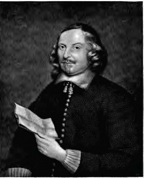For the last couple weeks, I’ve written some ecclesial and theological provocations. For the next couple weeks I’m going to focus on spirituality — namely, prayer — as well as blogging about other things.
I’ve got a couple books out that focus specifically on praying the Bible: the first one is about the ancient art of lectio divina; the second about using prayers from the Bible in our daily lives. I’m going to be posting some material from those books here. This, I hope, will generate discussion in the comment section and throughout the blogosphere in a way that the books themselves cannot. Today, a preface to the practice of lectio divina:
A friend of mine calls the Bible “the nonfiction storybook of God’s interaction with humankind.” Some of us may get hung up on the word storybook, thinking it implies a lack of truth or historicity. But the Bible is a collection of stories, some from the ancient past of Israel and some from the more recent past of Jesus and his early followers. The stories are very much true and very much alive.
The aliveness of the Bible and the stories within it are what sets
Christian Scripture apart from any other book you can buy. One way to understand that way of reading the Bible is
like dissecting an animal in science class. I can remember getting my
formaldehyde-soaked baby pig in tenth-grade biology class. Mainly I
remember the smell! My lab partners and I named him Porky. Porky was
dead, of course. The only way to dissect something is to kill it first.
This is what we often do to the Bible when we get hung up on a word or
a phrase or a verse. We deaden the liveliness of the book God has given
us when we spend more time reading the notes in our study Bibles than
we spend reading the actual text. When we try to freeze the Bible in a
certain time period, it becomes like an ancient relic soaked in
embalming fluid.
That way of reading the Bible–deadening and then dissecting it–stands
in contradiction to the way Christians have always understood our
the way Christians have always understood our
sacred book. John Robinson (A.D. 1575-1625) was the pastor of the
Pilgrims before they left on the Mayflower for the New World. His
famous saying summarizes a different way of approaching Scripture:
“There is yet more light and truth to break forth from God’s Holy
Word.” In other words, God has new things to say to us through the
Bible today. Scripture is not static. It’s not like a history textbook
that simply records events from long ago. Instead it’s living and
active and has the ability to constantly transform the lives of people.
You might think “the Bible is living” is a weird idea. You might have a
Bible near you right now. Look at it. It sits there, inanimate, made of
dead trees and maybe bound with the hide of a dead cow. That doesn’t
seem living in any way. The Bible lives in another sense: because it’s
God-breathed, it has the ability to breathe God’s Spirit into us. God’s
Spirit hovered over the face of the turbulent waters in Genesis and
brought order out of chaos. God’s Spirit gave Jesus the power to heal
people who were suffering. And God’s Spirit blew into the upper room
where the Disciples were gathered and blew them out into the streets
where they proclaimed the good news and started healing people
themselves. This same Spirit indwells the Bible today, gives the Bible
power, and guides us in our interpretation of God’s Word.
Think of it this way: The belief of Christ-followers is that, though
the Bible is done being written, it’s not done writing. The Bible
writes its truths on our hearts, speaking its words constantly into new
situations, new times, and new cultures. God’s Spirit is alive and well
and enables us to read the Bible in faith. No other book can make that
claim.
If you want to read more, I invite you to check out Divine Intervention: Encountering God through the Ancient Practice of Lectio Divina.

